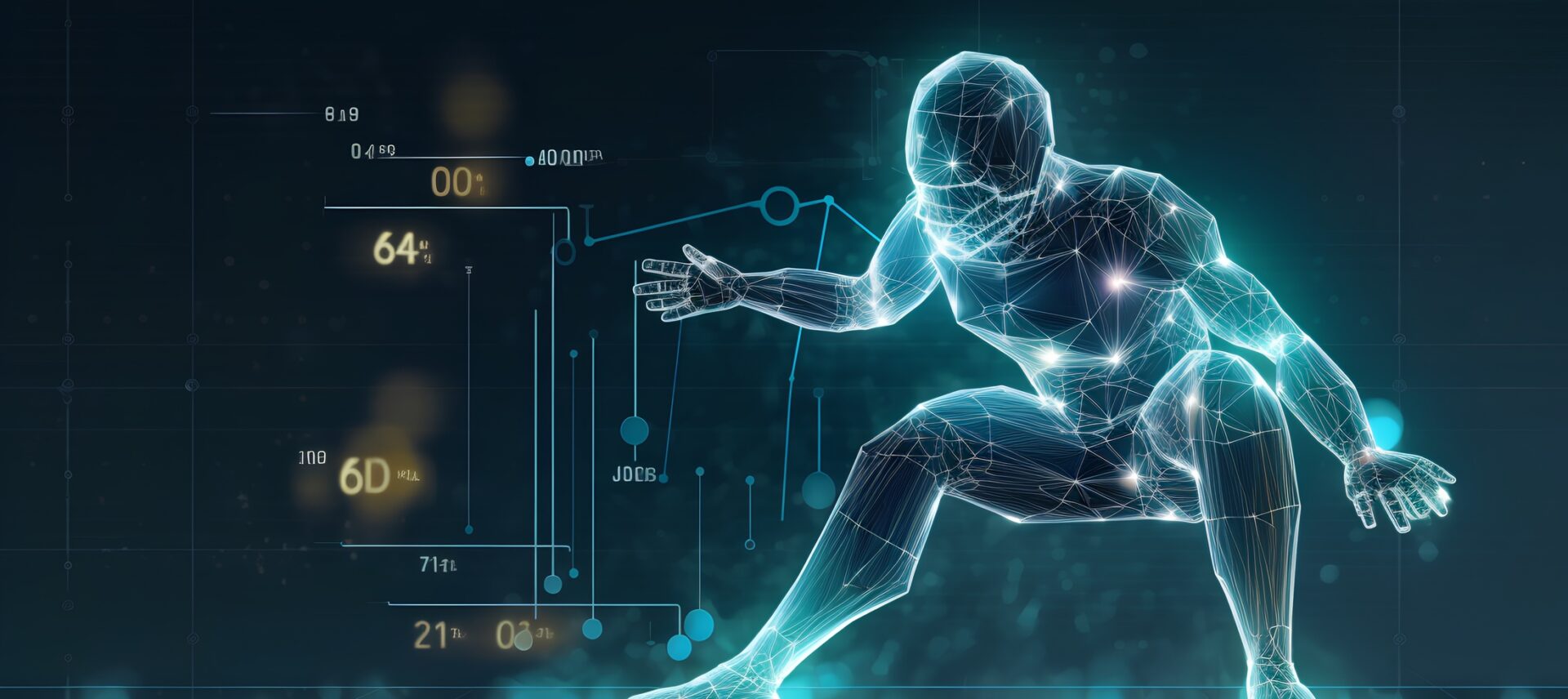News & Insights
Inside the technology for next-generation sports training facilities
Elite athletes and teams constantly seek innovative ways to gain a competitive edge. Salas O’Brien provides an inside look at the technology for the new athletic training facilities that serve as the incubator for extraordinary talent, honing the skills and physical capabilities of athletes across a range of disciplines.

In professional and collegiate sports, the margins between victory and defeat can be razor-thin. Athletes and teams are in a constant quest for innovation to gain that extra edge. In this article, we’ll delve into the world of technology that powers these state-of-the-art training centers and the infrastructure needed to support them.
Player tracking: precision beyond the eye
Player tracking is a cutting-edge technology used in various sports to monitor and analyze the movements of players and the ball or puck in real-time. It provides a level of precision that surpasses what can be perceived by the human eye. This technology gathers critical data and analytics, enabling informed decision-making to enhance both individual player performance and team game strategies.
- High-density RF access points. RF access points are a crucial component of player tracking systems. These networks facilitate the seamless transmission of data from tracking devices to centralized systems, ensuring real-time monitoring and analysis of player movements. RF access points use frequencies outside of the Wi-Fi spectrum so they don’t interfere with existing Wi-Fi systems.
- Global positioning systems (GPS). GPS technology is used in player tracking to pinpoint the exact location of athletes on the field, court, or ice. It provides valuable information about player positioning, speed, and distances covered during training and competition. GPS tracking enhances performance analysis and aids in refining training programs.
- Local positioning systems (LPS). Local positioning systems are similar to GPS but operate on a smaller scale within sports facilities. They offer precise location data for indoor environments, ensuring that player tracking remains accurate even when athletes are training or competing indoors.
- Inertial measurement units (IMU). Inertial Measurement Units are sensors that measure an athlete’s movements and orientation in three-dimensional space. IMUs are often integrated into wearable devices, providing data on acceleration, rotation, and velocity. This data is invaluable for understanding an athlete’s physical performance.
- Optical tracking systems. Optical tracking systems use cameras and sensors to capture detailed information about player movements. These systems offer a high level of accuracy, enabling coaches and analysts to study an athlete’s technique and performance in great detail.
These technologies collectively form the backbone of player tracking systems, offering coaches, trainers, and athletes insights into their performance and evolution of strategy.
Currently in the NFL, player safety is enhanced through meticulous equipment tracking. Essential gear is outfitted with RFID chips, allowing for real-time verification that players are wearing the equipment specifically tailored to their individual safety requirements.
Data-driven individualized training and recovery
Elite athletes are regularly using sensors and wearable devices to gather vital health and performance data to fine-tune their training and recovery routines. This gives both players and coaches insights into training thresholds to push the edge while foreseeing risks to reduce overall injuries. Sensors can measure any number of metrics like heart rate variability (HRV), velocity, sprints, impacts, and sleep patterns.
Performance tests can be integrated into the weight room with athletes logging onto an app to get their individualized training plans with digital displays that show the athletes how they are performing. Coaches and trainers use the data collected from these technologies to tailor the training programs based on the insights gained.
At Miller Electric Center, the new training facility for the NFL Jackson Jaguars, each urinal has a sensor that measures the user’s hydration level. If the light turns yellow rather than green, then the user is alerted they need more hydration. If it turns red, the user knows they may need an IV.
There are a number of quantifying platforms available with technology designed to integrate with the athlete’s daily routines, but sensors are being used in many ways to improve training and performance. For example, at St. David’s Performance Center, the training facility for MLS Austin FC, there is an altitude training room that uses air sensors and regulation to simulate lower oxygen content found at higher elevations preparing players for games in cities at higher altitude like Denver or Salt Lake City.
Coaching video: more than just footage
A coaching video system typically consists of several key elements and components designed to capture, analyze, and deliver video content for coaching purposes. Here are the essential elements of a coaching video system:
- Cameras: High-quality cameras designed to withstand outdoor conditions and capture high-speed action are strategically placed to capture different angles and perspectives.
- Video analysis software: Specialized software is used to review, analyze, and annotate the recorded video footage. This software allows coaches and analysts to slow down or pause the video, draw lines or shapes on the screen to highlight key points, and add text or voice annotations for explanations.
- Secure cloud-based storage and sharing: Robust storage solutions are essential for archiving and managing the large volume of video data generated by coaching video system. Given the sensitive nature of video content in sports, security measures are in place to protect data integrity and ensure that only authorized personnel can access and manipulate the video footage.
- Metadata and tagging: Metadata and tagging tools are used to categorize and organize video clips. This allows coaches and analysts to quickly search for specific plays, moments, or training sessions. Much of this is currently still done manually to get the level of accuracy needed in the metadata.
- Playback devices: Whether it is a display in the training room or a handheld device, simple, dependable, and easy to use is the design mantra. The technology has to work—easily—every time.
Coaching video systems empowering coaches, analysts, and athletes to review, analyze, and improve their performance through detailed video analysis.
At LECOM Harborcenter—the training facility for the NHL Buffalo Sabres, Salas O’Brien included a video monitor on a motorized lift that popped the display up from behind the dasher board so the coach could bring the team over to the side of the ice and review practice footage or training videos.
The impact of advanced technologies on the design of high-performance athletic training facilities
As the world of professional and collegiate sports evolves, the technology driving these training facilities is a game-changer. It’s not just about winning; it’s about achieving excellence, pushing the limits, and embracing the future of athletic performance.
Some of the design considerations include:
- High-density RF and high-density Wi-Fi requires a robust infrastructure to ensure reliable and fast connectivity among concurrent users. Multiple access points with a high-capacity wired network backbone is necessary for adequate coverage.
- Sensor integration. Training centers are designed to accommodate the integration of sensors and data collection devices. This means strategically placed sensor arrays and infrastructure to support data transmission throughout the facility.
- Wearable device charging stations. Facilities now include dedicated charging stations for athletes’ wearable devices, ensuring they are always ready for use during training sessions.
- Data analysis zones. Training centers incorporate designated areas where coaches and analysts can review and analyze the data collected from athletes. These zones are equipped with high-resolution displays and comfortable seating for in-depth analysis.
- Integrated video analysis rooms. Facility design incorporates video analysis rooms with advanced playback equipment and annotation tools. Coaches and analysts can review game footage and training sessions in detail.
- Privacy and security. With the influx of sensitive health and performance data, facility design emphasizes physical and cyber security measures to protect team plans and athlete data.
The impact of data-driven individualized training on facility design is profound, leading to facilities that are not just places to train but hubs of technological innovation. These training centers provide athletes with the tools and environments they need to optimize performance while maintaining their health and well-being.
How Salas O’Brien can help with design for athletic training facilities
Salas O’Brien has extensive expertise in designing state-of-the-art athletic training facilities, catering to both professional and collegiate sports organizations. We collaborate closely with teams and architecture firms, serving as a vital resource for ideation, infrastructure design, and communication with manufacturers. Our role ensures seamless integration of all technological infrastructure into the building, creating an environment where next level performance, health, and safety thrive.
For media inquiries on this article, reach out to Stacy Lake.

Brian Elwell, PE, RCDD, INCE Bd Cert
Brian Elwell has an impressive 25+ year career that includes designs for multiple sports facilities in the NFL, NHL, NBA, MLS, and NCAA. Brian works with top-tier architects on large-scale construction projects that have elevated commercial and political stakes. He serves as a Senior Vice President at Salas O’Brien. Contact him at [email protected].